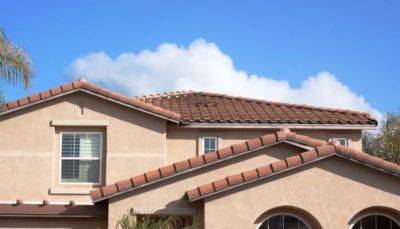Remediating Stucco: What Does It Mean & When Do You Need It

Remediating Stucco: What Does It Mean & When Do You Need It
When it comes to stucco, a lot of homeowners choose this type of siding to give their exterior a different look and keep moisture, fire, and other perils out of the way. However, stucco is not invincible.
Moisture, the pesky household problem, can pose a threat to stucco. If not noticed on time, it—or any other water damage from the plumbing—can find its way to the stucco and ruin it.
In a scenario where your stucco is damaged, did you know that you have two options to choose from? You can either repair or remediate the stucco. The difference between stucco remediation and stucco repair is significant.
Unlike stucco repair, remediation asks for more work. Keep reading below to see what stucco remediation is and when you need it.
What Is Stucco Remediation?
Wondering what is stucco remediation?
Stucco remediation is a complex and effective way to mend the entirety of the walls. If you’re thinking stucco remediation sounds pretty much like stucco repair, you’d be wrong. Complete stucco remediation goes beyond stucco repair since it deals with stripping the stucco off the walls, repairing damages, and then applying it anew.
Remediating stucco revolves around completely replastering every exterior wall to tend to the issues causing the damage in the first place. The main underlying issue of stucco damage that requires remediation includes moisture that’s gotten between the framework of the walls on the inside and the stucco layer on the outside of the walls.
Stucco Remediation Process
In a nutshell, a stucco remediation process looks something like this:
- Removing stucco: All of the wall sidings are removed, together with any wires and nails. The walls are then cleaned and prepped for further work.
- Removing unusable plywood sheathing: Damaged insulation and sheathing are removed entirely.
- Removing mold and performing structural repairs: This step is reserved for removing mold and other structural damage caused by moisture.
- Removing doors and windows: This step of the process deals with the removal of every window and door in the walls. The window/door areas are where you can find the most obvious signs of water damage. Once the flashing is redone, the windows and doors go back in.
- Installing house wrap: House wrapping is a process involving the insulation of windows, doors, pipes, and steps using flashing tape.
- Adding home cladding: Stucco remediation contractors will proceed with installing new siding on your home.
- Finishing up: The team you choose to remediate your stucco should take the time to clean up the surrounding area of any debris created during the process.
Remediation vs. Repair: What’s The Difference
As we mentioned, stucco remediation services and stucco repair are not the same. Stucco remediation is a wholesome process that tends to the walls of the home as a whole, whereas stucco repair only deals with a portion of an area that’s suffered damage. In other words, repair is superficial, remediation is thorough.
The reason why homeowners need remediation is because of deeper damage caused by water damage. By doing remediation, you are practically tending to the underlying problems of stucco damage and delivering a permanent remedy.
Remediation is the process you turn to when you want the issue resolved and future damages prevented.
Stucco Repair, On the Other Hand…
Stucco repair is used only when the damages to the stucco are superficial. For instance, if there are cracks but no mold or moisture damage is visible, it’s best to repair the stucco than remediate it.
Repairing stucco is a partial fix that only addresses visible damages in particular areas. By repairing stucco, you are basically tending to the problem and not its cause, which is why stucco repair is much faster and more straightforward than remediation.
In essence, a stucco repair involves the following steps:
- Cutting and removing the stucco only in the affected area;
- Removing and replacing damaged wood behind the stucco;
- Applying a new coat of stucco.
As you can tell, the stucco repair process is much less intricate than the remediation process, which is why it’s also more affordable than stucco remediation. In all fairness, with major stucco issues, the stucco remediation cost should be the last thing on your mind.
Sometimes, repairing your stucco isn’t going to fix the problem altogether. Serious damage to stucco can only be amended by remediation; if you fail to do so and opt for stucco repair, you’re risking the damage to deepen the problem and, ultimately, lead to more expenses down the road.
When Should You Remediate the Stucco?
Even though homeowners might have a difficult time deciding which approach to choose, there are some tell-tale signs your stucco will benefit more from remediation than from repair. We mentioned cracks as obvious signs of stucco damage; these cracks can be small or large, in either case, something isn’t right with the stucco.
Some situations that call for stucco remediation include the following:
- Bubbling alongside the siding, close to the bottom;
- Dark blotches that have been there even after nice weather;
- Chipping or cracking in the stucco siding;
- The drywall on the interior walls is soft to the touch;
- There’s a musty smell coming from the exterior or interior walls.
If you notice any of these signs, know that your stucco is suffering substantial damage that won’t be fixed by anything other than remediation.
Advantages of Prompt Stucco Remediation
As you might know by now, immediate stucco remediation can save you a lot of trouble and money. Here are some advantages that this process holds:
- It’s a permanent fix;
- It means less stucco maintenance in the years to come;
- It saves money on frequent repairs;
- Gives you peace of mind knowing the problem is nipped in the bud.
Where to Look for Stucco Damage
If you’re wondering where you should look first for any potential stucco damage, these are the most common places:
- Around the chimney;
- On the patio or the deck;
- Around the doors, doorsteps, windows, and window sills;
- On the masonry;
- Other penetrations into the home.
All in all, when it comes to stucco failures and remediation, know that this particular method is the only remedy that will save the stucco and the rest of your home’s structure from suffering even more damage in the future.
Stucco Remediation Cost
When it comes to the cost of stucco remediation, know that early detection will reduce the overall costs—the more you wait to remediate the stucco, the greater the costs will be. The moment you notice mold, pools of moisture, or dark spots on your stucco, don’t think twice about calling a professional to resolve the issue
For example, you can go online and search for “stucco remediation near me” and see what pops up. Also, you can ask around your friends and neighbors for referrals.
On average, buying 80 pounds bag of stucco material will cost around $9. With this amount of material, you can cover up to 25 square feet. However, if you need a finishing coat of stucco, you can expect to pay more (anywhere from $17 to $22 a bag).
In general, you can expect to pay anywhere from $6,000–$9,000, considering the $6–$9 per square feet ratio.
Stucco & the Remediation Process: Final Words
Stucco is a very durable finish material with a typical life span of 50–80 years or more.
It is not only one of the most durable surfaces available, but it also features the lowest
annual maintenance cost when compared to other siding materials.
If you’ve noticed your stucco is somehow failing, the faster you decide to deal with the issue, the better. Stucco remediation addresses the causes of the problem, so if you decide to go with it, know that even though it’s pricier, you’d still pay less if you act right away.
Homeowners often leave it up to professionals like our team at AA Brite to choose which method is best for the stucco in question: repair or remediation. Stucco repair is the most fitted option when the damage is isolated and there’s no structural harm to the walls or the rest of the property. On the other hand, if there’s more than what meets the eye, our professionals can remediate the stucco, too.
FAQs
What is the biggest problem with stucco?
One of the major issues with stucco is its porosity. In other words, it means stucco is dry and prone to cracking.
How often should stucco be redone?
In general, stucco is very durable. With the right maintenance, you can expect your stucco to last for up to 50 years or more. On the other hand, stucco finishes are best redone every 4 to 5 years.
Is it expensive to re-stucco a house?
Remediating stucco on residential properties is more expensive than redoing drywalls. In essence, yes, redoing the stucco is more expensive than repairing it since the process will involve every wall in the building.

